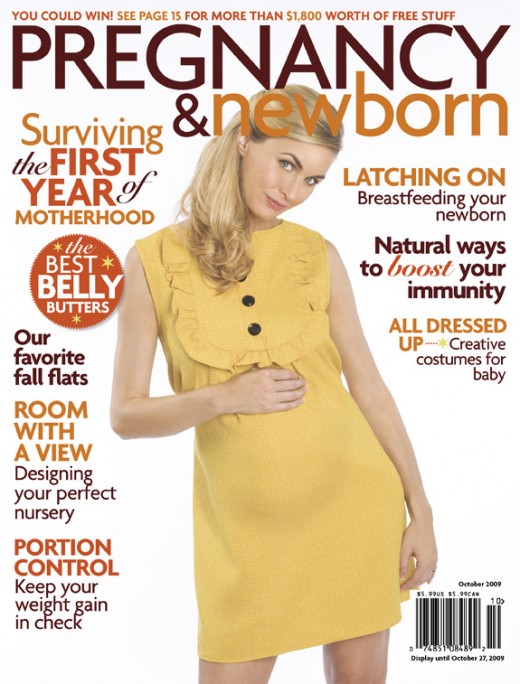Author Archive
Gifted And Different – How Parents Can Support And Nurture Their Out Of The Ordinary Child
2011

Recently, my client Dr. Fran Walfish, a Beverly Hills Psychotherapist and author of The Self-Aware Parent shared her expertise with Central Valley Moms on the topic of gifted children and how best parents can nurture and support nurture their out of the ordinary child.

How To Write The Perfect Pitch
Any good publicist knows that a pitch serves one purpose – to pique the interest of a journalist or producer enough to get them to cover your story. So, knowing how to write a good pitch is crucial to getting media placement. AJGpr, your public relations specialist, recommends following these 9 simple steps to writing the perfect pitch:
STEP ONE: Preparation
Ask these questions:
– Do I have a compelling, newsworthy, or interesting story to tell?
– Do I have a clear understanding of my objectives (drive business, create awareness, improve sales, heighten image)?
If the answer is yes to all of the above, then move to Step Two.
STEP TWO: Create Your Media List
Develop a targeted media list that captures all the outlets that might be interested in your story. Be honest with yourself and ask the hard question – is there a place for my story in this magazine/television program/radio show/blog? If the answer is no –then check it off your list.
STEP THREE: Know Your Media Targets
Do your homework. Know you media outlets inside and out. What kind of stories/news items do they feature? Who is their target audience? You have to watch the television programs, read the magazines, newspapers, blogs, and listen to the radio shows you are pitching. If you understand the outlet and their target demographic you will know if your pitch is right for that outlet.
STEP FOUR: Know Your Contacts
If you have a health story, find the producer or editor who covers heath.
Spend the extra effort to discover the best contact at each outlet, the one most likely to be receptive to your pitch. Don’t waste your time blasting a pitch out to a large list, nobody will write about it. Before you begin pitching, you should know without a doubt that you have the right contact for the story you are pitching. Then frame the story/news item in a way that makes it clear to the producer/editor that it fits in with their specific outlet’s approach – otherwise it ends up in the trash.
STEP FIVE: Craft Your Subject Line
The subject line is the first thing your contact will read – so it has to catch their attention and make them want to open your email and not hit delete.
A good rule for any subject is to be as succinct and to the point as you can.
STEP SIX: Craft Your Opening Sentence
Your opening sentence is key. Here is where you can expand on your subject and hook the reader. It must be interesting and compelling so that your contact wants to read more.
STEP SEVEN: Craft The Main Body
Once you have readers’ full attention with your subject line and opening sentence, you then want to interest and educate them. You need to provide information that will resonate with the target publication and answers the five W’s (who, what, when, where, and why) and the H (how). Use a professional and friendly tone. But make it feel personal. If you have done your homework, your pitch should be something your reader will care about. And remember keep your pitch short and to the point.
STEP EIGHT Rewrite, Edit and Proofread
Writing a the perfect pitch takes time, so don’t rush. Look at your pitch with a critical eye and when you are satisfied that you have crafted an interesting pitch with a catchy subject line and NO typos…then hit send.
STEP NINE: Follow-up
Journalists get dozens of pitches a day and can’t always read your pitch the moment you send it. Give it a day or so, sometimes even a week – and if it is a good pitch, which fills their immediate needs, they will contact you. Some will file it away and others will hit delete. So use your judgment and if you feel inclined to follow-up then send a quick one-sentence email, hitting on the core message of your original pitch and asking for their response.
Is Your Toddler Too Young For Math Bootcamp? Dr. Fran Walfish Weighs In On CBS Los Angeles
2011

Is Your Toddler Too Young For Math Bootcamp? Just how young is too young for a child to begin a hardcore academic regimen? Many parents now start children as young as three years old on intense biweekly math and reading drills. My client, leading Beverly Hills child and family psychotherapist, Dr. Fran Walfish, weighs in on this new trend to send kids as young as three to programs like Junior Kumon and Sylvan Learning. Watch the story on CBS Los Angeles here.

Millions of children are signing up for Facebook, and a recent survey released shows parents are helping their children lie to get online.The minimum age Facebook or its social network is 13 — in line with federal laws to protect children’s online privacy.Yet according to a study funded in part by Microsoft and universities, more than half of all parents with 12-year-olds said they knew their children were signed up for the service. One in five parents of 10-year-olds knew of their children’s activity on the site. Asked how the kids signed up for the service — thus violating the site’s terms of service — nearly seven in 10 parents said they helped their children set up accounts. According to the survey, one in five parents acknowledged having a 10-year-old on Facebook. That number rises to 32 percent for parents of 11-year-olds and 55 percent for parents of 12-year-olds. My client, parenting expert Betsy Brown Braun and bestselling author of Just Tell Me What To Say and You’re Not The Boss Of Me, shares her insights on this new trend with WTOP radio in Washington. Have a listen.

One of the most serious, life-threatening risks for children in America today is choking accidents. My client, Dr Nina Shapiro, Pediatric Ear, Nose, and Throat Specialist and author of Take a Deep Breath: Clear the Air for the Health of Your Child is particularly concerned about food choking hazards, which, unlike toys, are not required to carry warning labels.
If you’re a parent, read Dr. Shapiro’s recent report on America Now. It is both eye-opening and potentially life-saving.

Babywearing Safety Top Tips
This month for their Ask the Experts series, Pregnancy and Newborn is gathering info on babywearing. They asked my client, Dr. Nina Shapiro, Director of Pediatric Ear, Nose, and Throat at the Mattel Children’s Hospital UCLA and author of Take a Deep Breath: Clear the Air for the Health of Your Child to share her insights on babywearing safety. To read more on how to keep you baby safe and cozy click here.

Rabbi Steven Carr Reuben appeared on The Rude Awakening to discuss is new book Becoming Jewish: The Challenges Rewards and Paths To Conversion. Listen to his interview here [audio: http://ajgpr.com/wp-content/uploads/2011/10/09_19_11_Rabbi_Steve_Carr_Reuben-1.mp3]

What is PR?
In this competitive world, media attention can make a company, organization, product, or individual stand out from the crowd. Having an edge in the market place is crucial to the success of any company, organization, product, or individual. Some companies/individuals choose to invest in costly advertisement campaigns to enhance their public image. Others use public relations to get their message “out there.”
Public Relations, unlike advertising, guarantees a company, an organization, a product, or individual, third-party endorsement by providing media exposure through television, print, Internet, or radio. Such third-party endorsements effectively augment the reputation and image of a company, an organization, product or individual.
Public relations specialists often know as “image shapers” are hired to do just that — shape and maintain the image of a company, organization, or individual in the eyes of the client’s various target audience through media placements. A PR specialist must first understand their clients mission and business goals before launching a media campaign. Once this is established, and the target audience is defined, a skilled PR specialist uses her media contacts to present the company, organization, product, or individual in the best light.
PR is a very effective way to reach and influence a target audience and costs far less than advertising.

My client Dr. Nina Shapiro helps keep our kids safe from choking on Halloween with these great tops featured in Westside Today.
What child doesn’t love Halloween? In fifteen years as a pediatric ear, nose, and throat doctor, Halloween is always my slowest workday. What parent would dare subject their child to a doctor’s appointment, or (perish the thought!) a surgery, on the most sacred of sugar-filled days? Everyone gets involved; newborns don some sort of cute, oversized pumpkin onesy, or get dressed up as a pea in a pod. Toddlers waddle around as bunnies, lions, and teddy bears; preschoolers wear capes or carry fairy wands, and elementary schools are laden with Harry Potters and Wonder Women. And the candy is endless! Sugar is limitless, kids are allowed to scare their teachers (within reason), and school assignments undoubtedly include some sort of crossword puzzle with the word ‘jack-o-lantern’ in it.
All of us know the good part about Halloween; I’ve never met a parent who hasn’t ‘shared’ in their child’s Halloween bounty, and many hope to snap an adorable kid-in-a-costume shot that may work for a holiday card photo. But we must remember the safety issues that arise on this holiday.
All of us rightly worry about losing our child on a dark, crowded street, errant cars injuring children who are running into the street, careless adults on cell phones, not paying attention to their children who are running into the street, or not being able to get our sugar-loaded children to sleep on a school night.
But here’s what I worry about, and, while Halloween day is often a quiet one, Halloween night can be frightful for an airway surgeon because of choking. I don’t mean choking on clothing that is too tight, or external choking by a teenage prankster. I mean choking on regular old candy. The kind your child brings home from preschool, receives from your neighbors, and likely the kind that you are giving out. Choking is the number one cause of accidental death in children under age three years. Yes, it’s true. One child dies every five days in this country from choking on food. Most of these kids are under age three, and most of the food items causing these horrors do not contain warning labels indicating the danger to the under-three crowd.
It’s that ‘magic’ age three, when kids cross the threshold and are allowed to play with toys comprised of ‘small parts’. But what about food with small parts, sticky bits, or unsafe fragments? What was the last food (or candy) label you’ve read with the commonly found toy warning “not for children under three”? Still thinking? Let me know, because those labels don’t exist. And now I’m here to rain on your Halloween parade; no candy is safe for children under three. Label or no label. This includes gum, even if it’s sugarless. Tots can chomp on a thin, plain chocolate bar, if they are seated (so don’t steal those Hershey® bars from your kid’s bag—that’s all they should be allowed to eat).
Children under age three years have neither the motor control, patience, nor airway reflexes to safely eat hard candy, chewy candy, caramel corn, popcorn, or nutty candy, especially on a busy, dark, Halloween night. Older children should be able to do so, but not while walking around trick or treating. Even kids over age four or five years are at high risk for choking on candy if they eat it while in action, and a choking event may go unnoticed if their face is hidden under a Darth Vader mask.
There is plenty of fun to be had on Halloween, while heeding these simple anti-choking tips; awareness is the first and most important step, which is why I’m writing this. So, Happy Halloween! From your neighborhood airway doctor. Let’s meet up at a party or while trick or treating, not in the emergency room.
Dr. Nina L. Shapiro is the Director,Pediatric Otolaryngology and an Associate Professor at the UCLA School of Medicine.
Rewards, Challenges Of Converting To Judaism, Author Jennifer Hanin Talks About Her Experience
2011

Jennifer Hanin grew up Catholic, but a few years ago, she replaced her Christmas tree, lights, ornaments and fake snowman with a Menorah and shabbat candles. She’s the co-author of the new book Becoming Jewish: The Challenges, Rewards, and Paths to Conversion. On October 7th she talked with Michel Martin about her conversion, particularly just before the Jewish holiday Yom Kippur. Listen to her story here. For more information about the book or to purchase a copy click here.


